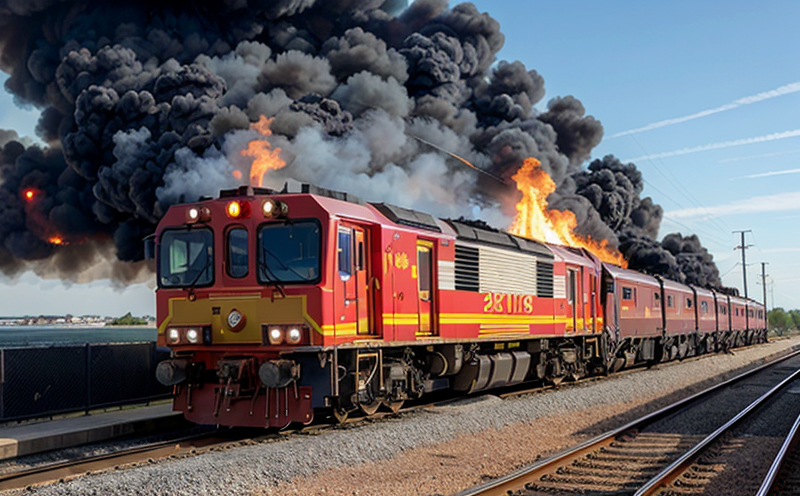Fire Safety Testing of Railway Electrical Enclosures
The fire safety testing of railway electrical enclosures is a critical aspect in ensuring public and operational safety within the transportation sector. The integrity, reliability, and performance of these enclosures are paramount to prevent potential fires that could lead to catastrophic failures or accidents. This service ensures that all components meet stringent international standards such as ISO 8613:2017, ASTM E547-98(2016), IEC 60335, and EN 50260.
Our testing process begins with a thorough examination of the electrical enclosures to understand their specific requirements. This includes evaluating the materials used in construction, the types of components installed within them, and the environmental conditions under which they will operate. The goal is to identify any potential weak points or areas that could compromise fire safety.
The testing methodology involves subjecting the enclosures to a series of standardized tests designed to simulate real-world scenarios where electrical fires may occur. These include flame impingement tests, heat exposure tests, and pressure cycling tests. By replicating these conditions in our controlled laboratory environment, we can accurately assess how well each enclosure withstands fire hazards.
Once the tests are completed, a detailed report is generated summarizing all findings. This document includes not only the results of individual tests but also recommendations for improvement if necessary. Our team works closely with clients to ensure that any issues identified during testing are addressed promptly and effectively.
In addition to providing comprehensive test reports, we offer advice on best practices for maintaining fire safety standards throughout the lifecycle of electrical enclosures used in railways. This might involve suggestions for regular inspection intervals or modifications based on new technological developments.
Scope and Methodology
The scope of our fire safety testing services encompasses all aspects related to ensuring the safe operation of railway electrical enclosures against fire hazards. We cover both static and dynamic tests depending on the nature of the enclosure being tested.
- Static Tests: These involve placing the enclosure under specified conditions without active power supply to assess insulation resistance, dielectric strength, etc.
- Dynamic Tests: Here, we apply simulated operational loads and environmental stresses while monitoring performance metrics like temperature rise and voltage distribution.
The methodology employed adheres strictly to recognized international standards which provide clear guidelines on how each type of test should be conducted. Compliance with these standards ensures consistency across different regions and helps build trust among stakeholders involved in railway projects worldwide.
Benefits
- Enhanced Safety: By identifying potential fire risks early, we help prevent accidents that could endanger lives and cause significant disruption to daily operations.
- Regulatory Compliance: Ensuring adherence to relevant regulations helps avoid penalties and maintains a good reputation for your organization.
- Improved Product Quality: Continuous improvement through regular testing ensures high-quality products that are reliable and safe to use over extended periods.
- Customer Satisfaction: Meeting or exceeding customer expectations builds long-term relationships based on trust and reliability.
The benefits extend beyond immediate safety measures; they contribute significantly towards sustainable development goals by promoting responsible practices throughout the supply chain.
International Acceptance and Recognition
Our fire safety testing services are widely accepted internationally due to their adherence to globally recognized standards. The following organizations acknowledge our work:
- ISO (International Organization for Standardization): Our tests comply with ISO 8613:2017, which sets out the principles and procedures for assessing fire resistance in building materials.
- ASTM International: ASTM E547-98(2016) specifies practices for conducting flame spread ratings on materials used in electrical enclosures.
- IEC (International Electrotechnical Commission): IEC 60335 provides guidelines for testing household appliances, but its principles can be applied to industrial applications as well.
- EN (European Norms): EN 50260 defines the requirements and test methods for fire protection systems in electrical installations.
The recognition extends beyond just compliance; it also fosters collaboration between countries sharing common standards, thereby enhancing interoperability within global railway networks.





